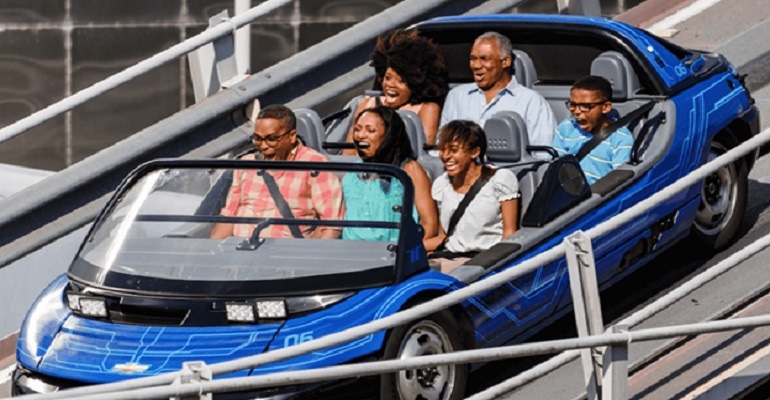Theme Park Engineering: Disney’s Test Track
This ride simulates GM’s process of testing cars for capability, efficiency, responsiveness, and power.
July 21, 2023

This is the first in a Design News series that looks at the engineering that goes into creating theme park rides. Years ago, I had the opportunity to interview a theme park ride engineer. He specialized in roller coaster design. I asked him how he ended up designing roller coasters. He replied, “It’s all I ever wanted to do. So, I went to school to learn the profession and I got a job.”
As part of this series, we’ll look at engineering schools that specialize in theme park engineering.
Let’s take a look at Disney’s Test Track at Epcot.
Test Track is a high-speed slot car ride manufactured by Dynamic Attractions located in World Discovery at Epcot in Florida. The ride is a simulated excursion through the rigorous testing procedures that General Motors uses to evaluate its concept cars. The ride culminates in a high-speed drive around the exterior of the attraction.
The attraction soft-opened to the public in December 1998, after a long delay due to problems revealed during testing. As a result, the attraction officially opened in March 1999. Test Track replaced the World of Motion ride, which closed three years earlier in 1996.
Originally, guests rode in test vehicles in a pseudo-GM testing facility through a series of assessments to illustrate how automobile prototype evaluations were conducted. The highlight of the attraction is a speed trial on a track around the exterior of the building at a top speed of 64.9 miles per hour making it the fastest Disney theme park ride.
Ride Details
After riders board the sim-cars and the seat belts are fastened, the car they designed will undergo four tests: capability, efficiency, responsiveness, and power.
Capability: The car connects to OnStar, then accelerates past a rain projection and skids out of control. Next, the continuing path disappears and the sim-car turns around to speed up again. A short time later, the sim-car makes a sharp left turn as a lightning bolt strikes. Following the capability test, the results of which car designs scored the best in the test are displayed.
Efficiency: The sim cars are scanned for optimum eco-efficiency in the first part. The second test performs an aero-dynamic test on the vehicle. Finally, the car is put through hyper-spectrum imaging. On the screen, guests can spot a performance text inscribed on one of the tires. After the test is complete, the best scores are displayed.
Responsiveness: The sim car accelerates around hairpin turns with laser-projected trees. Along the way, a sign can be seen with the "turn right to go left" quote from the 2006 Disney Pixar film Cars. The sim-car then enters a tunnel to encounter the 18-wheeler from the original version, which is now shown with lasers. When the vehicle exits the tunnel, the results of the responsiveness test are displayed.
Power: The sim car accelerates through flashing purple arches toward a wall with the ride's logo on it. The doors split open, and the car exits the building. The sim car accelerates along a straightaway until it crosses over Avenue of the Stars. Then the sim car makes a 90-degree right turn, then a 270-degree left turn circling over an employee parking lot. Exiting the turn, the sim car then travels back down another straightaway before making a complete counterclockwise circle around the ride building.
About the Author(s)
You May Also Like





